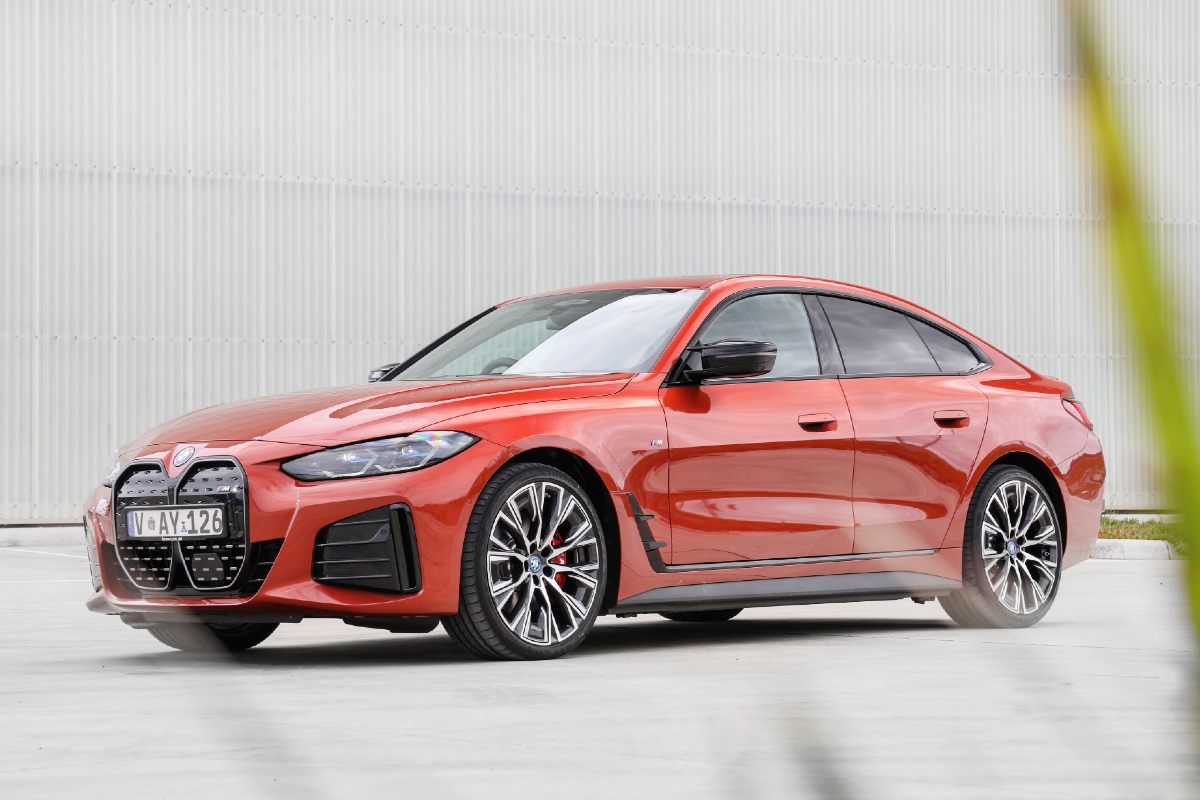
What is it?
A new twist on an old classic. BMW is famous for its sports sedans, like the M3 and M5, but with the automotive world making the switch to electric vehicles, change is coming to even the most famous brands and models.
The i4 is, in simple terms, an electrified alternative to the 4-Series Gran Coupe, offering a zero-emissions option for those who still appreciate a four-door sedan. More specifically the i4 M50 we’re testing here is an electric sports sedan, creating a battery-powered alternative to the iconic M3.
This is the first all-electric BMW to wear the famous ‘M’ badge, so there’s huge expectations on it. Of course, there’s a big difference between a proper ‘M car’ (like the M3/M4) and the ‘M badge’ models like this one (more akin to the M440i or M340i). But regardless of how tuned it is, having that one letter included in the name raises the stakes.
Does it have any racing pedigree?

BMW’s albeit-short-lived Formula E program was designed to accelerate its understanding of electric motors in a performance environment. No doubt the company has taken lessons on energy and thermal management from its time in the series.
Then there’s BMW and M Division, which have decades of motorsport knowledge to draw on to ensure the i4 M50 lives up to the high driving standards set by the M3, M4, M5 and others.
What’s under the bonnet?
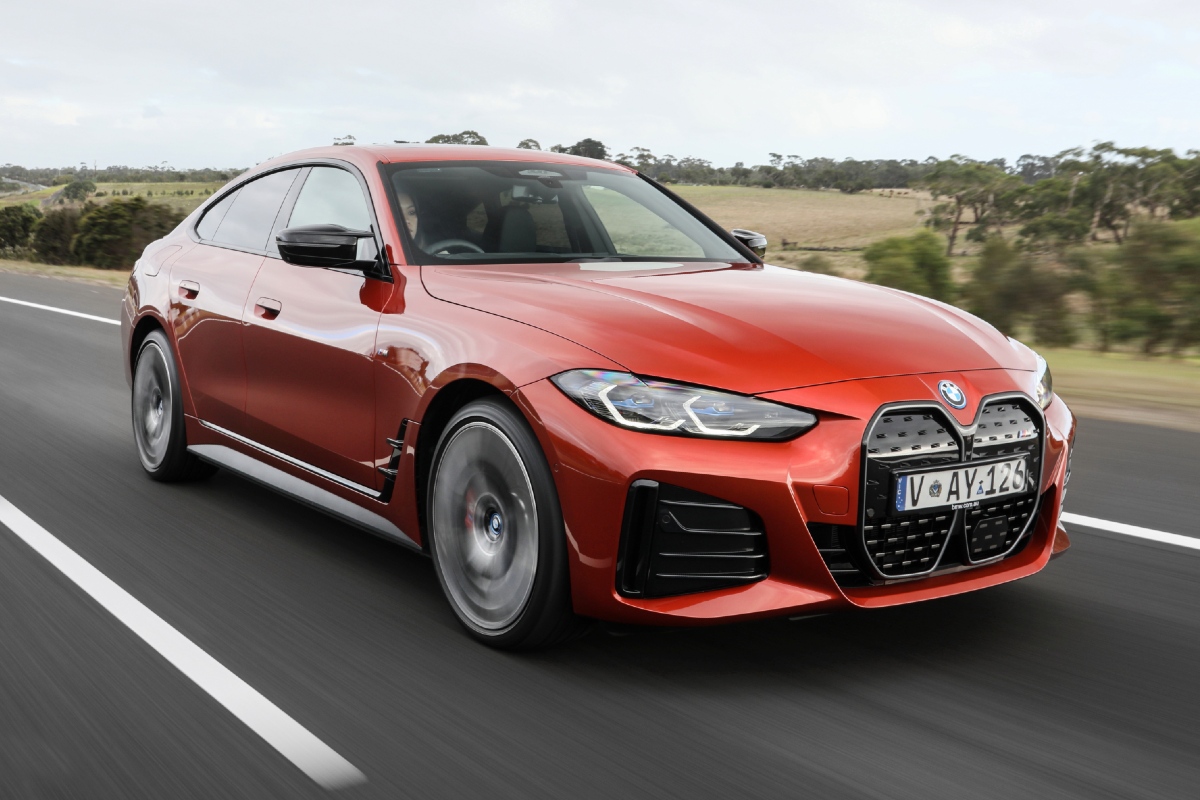
Quite literally what’s under the bonnet is an electric motor, it’s packaged where a conventional petrol engine would be because BMW has opted to utilise the existing platform it uses for the 3-Series and 4-Series, rather than a bespoke EV architecture.
This means the overall packaging for the i4 isn’t as free as other EVs but it has allowed BMW to get this car to market faster and cheaper than if it used a specific new vehicle architecture.
Befitting its status as an M-badged model the i4 M50 gets a very potent powertrain consisting of a pair of electric motors, one on each axle. The combined output of these two motors is an impressive 400kW of power and 795Nm of torque.
That’s impressive because the 3.0-litre turbocharged inline-six in the M3 Competition makes 375kW/650Nm, so the EV has the advantage on paper against its nearest would-be rival in the M line-up.
BMW claims the M50 will launch 0-100km/h in just 3.9 seconds, which is extremely rapid but only matches what the M3 Competition can do – so honours even. That’s because despite the extra power, the i4 is a much heavier car than the M3 thanks to its battery pack.
The battery in question is a 83.9kWh lithium-ion unit that BMW claims offers up to 510km of range.
On the road this adds up to a very potent sports sedan, regardless of where it gets its energy from. The fact it’s electric means as soon as you put your foot down the i4 launches forward with almost instant thrust. And that performance keeps coming as long as you keep your right-foot buried.
But while it doesn’t lack for performance, it does miss the drama of the M3 because it doesn’t have the same aural experience. Instead of a screaming six-pot the i4 makes a synthetic noise created with the help of Oscar-winning composer, Hans Zimmer. It’s a whirring sound that reacts as speed rises and falls to give you a greater sense of speed, which is a help when you’re really pushing the M50 to its dynamic limits but it’s still something that will take some time to get accustomed to (thankfully it can be switched off it it really bothers you).
How does it handle?
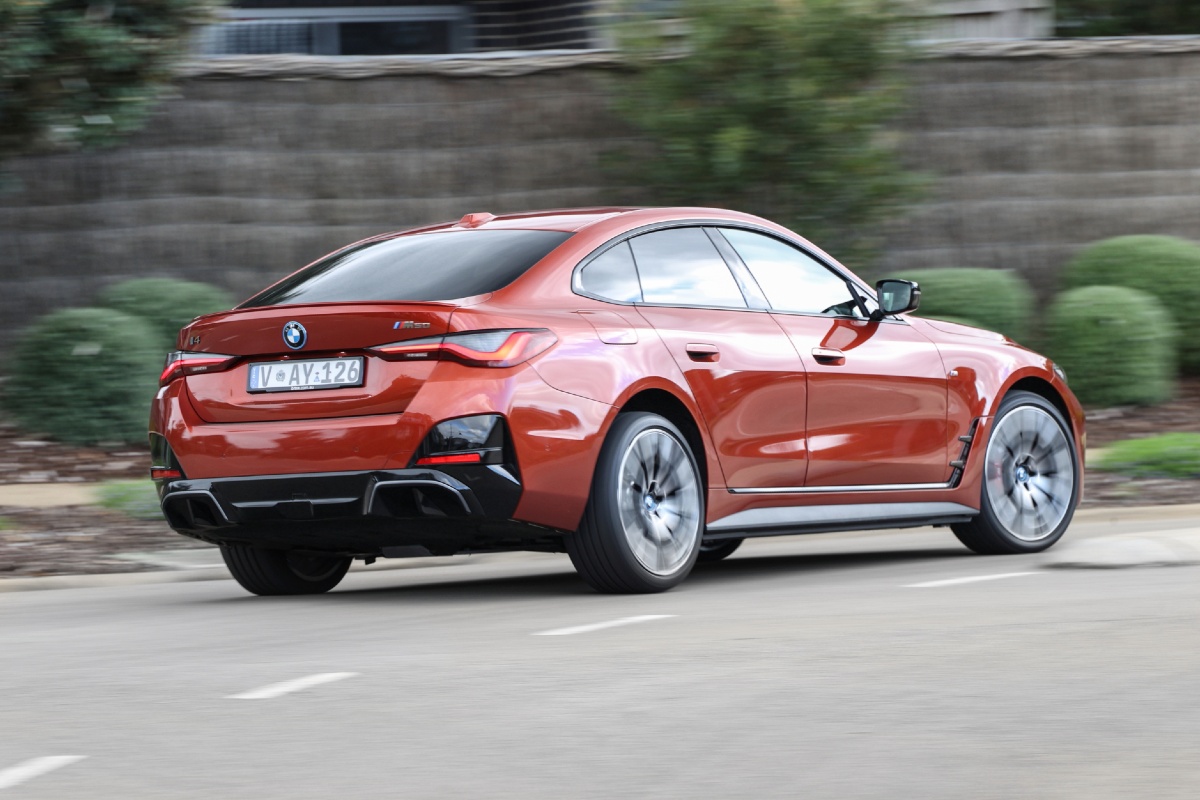
One of the major advantages of using an existing platform, specifically the 3-Series, is that it inherits all of the excellent chassis experience BMW has built into that model over decades.
In addition to this the M50 comes equipped with adaptive M suspension with bespoke tuning to account for the extra weight of the motors and batteries, as well as M Sport brakes and 20-inch M alloy wheels to ensure it handles sharply.
Electric cars tend to be more firmly sprung than a petrol-powered performance car to compensate for the extra weight of the batteries. BMWs tend to be more firmly sprung than their opposition because the Bavarian brand believes that a firmer spring equals sharper handling (which is true in theory, but historically that tends to suit the smoother roads of Europe, not Australia’s patchwork blacktop). So the combination of these two elements means the i4 does feel quite firm and can crash over bumps at times, but it does respond to inputs with the kind of directness you expect from a BMW sports sedan.
The steering feels great, the brakes are strong and it has the hallmarks of a classic BMW sports sedan like an M3, but it’s ultimately compromised by its weight. You can really notice the extra mass of the i4 when you’re trying to slow down and push it through corners.
But perhaps the biggest hindrance to the experience for the person behind the wheel is the sheer volume of active driver aids fitted to the i4. The combination of regenerative braking as well as pre-collision warning, lane departure warning and the other systems means the company once known for building the ‘Ultimate Driving Machines’ seems to want to minimise the role of the driver.
They can be turned off, but that’s not really the point. The safety aids are really worthwhile and no doubt help cut down on accidents, but they need to be better integrated into the driving experience in the i4.
Where would you most like to drive it?
I’d love to take the i4 M50 onto a track where I can safely turn off all the assistance systems and experience the chassis without interference. Because underneath all the gadgets and technology there’s an engaging and very quick car to be experienced.
What’s the interior like?
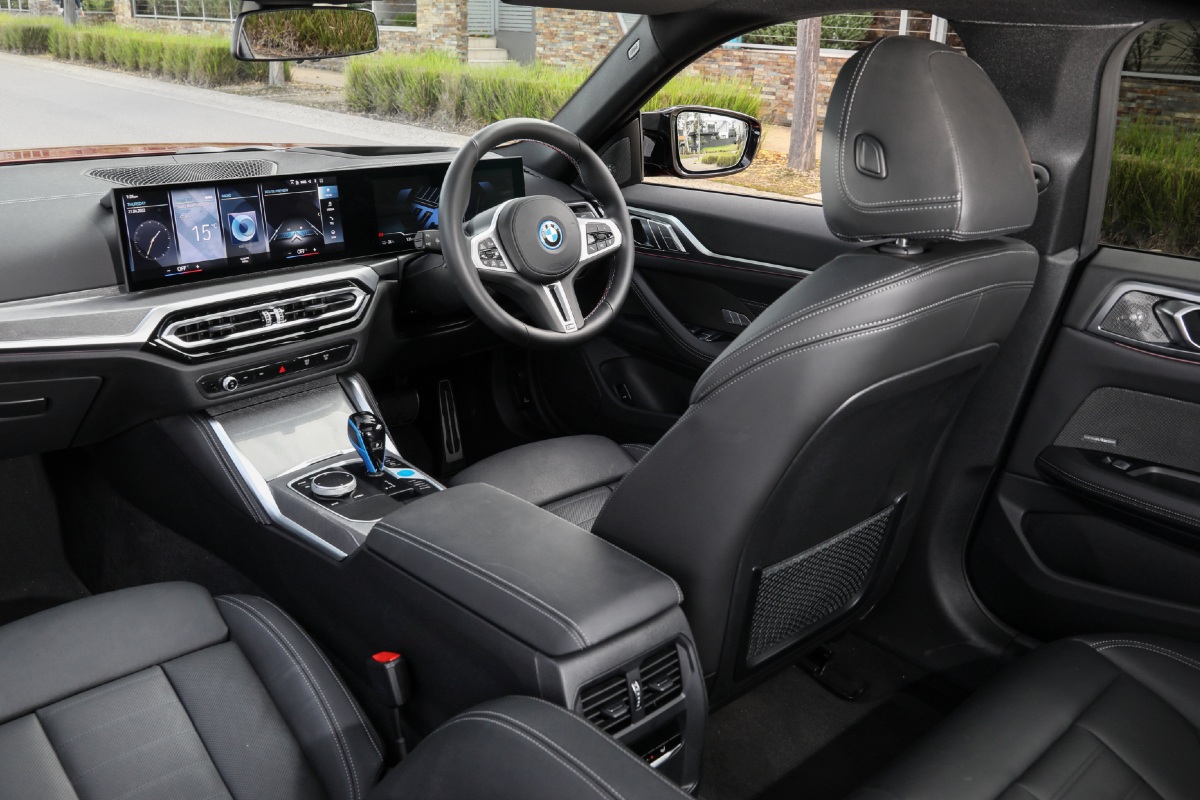
Still more of the same from BMW in terms of hardware, but the interface has been overhauled for a fresher, more modern look. Ironically, as someone who has criticised BMW’s conservative and evolutionary cabin design, it does take some time to get comfortable when you first get in.
Once you do get familiar with it you realise there’s excellent functionality from this new system and it does give the cabin a fresh look, albeit an evolutionary change rather than anything too revolutionary.
The rest of the cabin is very similar to what you’d find in a 4-Series Gran Coupe, so it does lack the design flexibility that a bespoke EV platform offers but the trade-off is it will feel very familiar and comforting to someone moving into an electric car for the first time.
How much does the BMW i4 cost?
The i4 M50 is priced from $124,900 (plus on-road costs), which makes it $6000 more than the petrol-powered M440i but more than $25,000 cheaper than the M3.
Against its electric rivals the i4 is competitively positioned but, as of publication, doesn’t have a direct rival in terms of size. The closest would be the Polestar 2, which is priced from $73,400 for the dual-motor range-topper, and the Tesla Model 3 Performance, which starts at $84,900.
In terms of prestige, the Porsche Taycan RWD has an advantage but does start at $159,700.
Would I buy one?
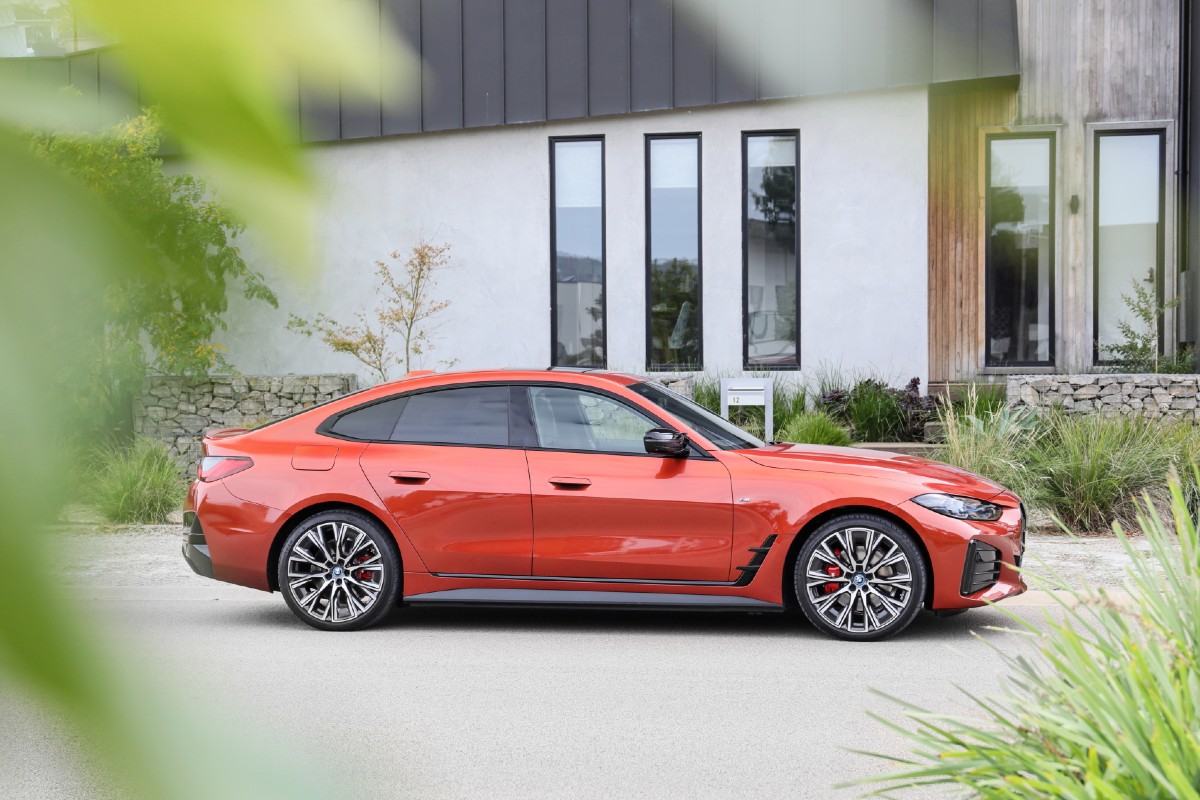
The short-answer is no. I say that because although the i4 M50 is impressive at this stage it doesn’t wow me enough to lure me away from its petrol-powered alternative – the M440i.
Unlike other EVs that use a specific platform that allows the car maker to really maximise the advantages of the technology – both in terms of performance and packaging – the i4 M50 really feels like a petrol-model converted to electric power to fill a short-term need.
All signs point to the next generation electric sports sedan from the Bavarian brand being something really special, but for now I’d prefer to enjoy the brand’s six-cylinder petrol engines just that little while longer.
2022 BMW i4 M50 price and specifications
| Price: | From $124,900 plus on-road costs |
| Powertrain: | Dual electric motors |
| Power: | 400kW |
| Torque: | 795Nm |
| Transmission: | Single-speed automatic, all-wheel drive |
| Range: | 510km |
| Wheels: | 19-inch alloys |
| Tyres: | 255/40 R19 |
| Length: | 4783mm |
| Width: | 1852mm |
| Height: | 1448mm |
| Weight: | 2290kg |
| 0-100km/h: | 3.9 seconds (claimed) |













Discussion about this post